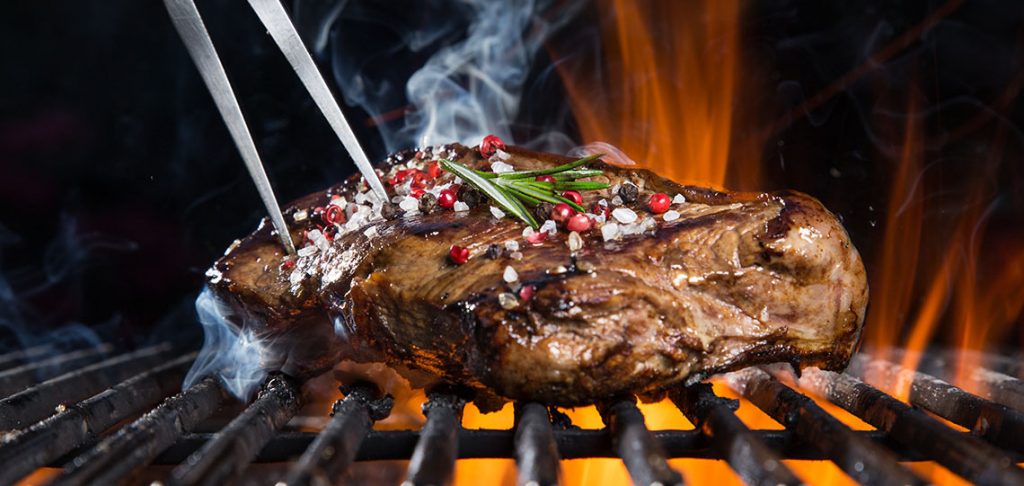Previous
Next
Preparing meat
- Defrosting – meat should be defrosted in the fridge in its original packaging for 48-72 hours, then removed from the packaging and rinsed quickly under cold water
- Barbeque – for barbecuing you should use a well-aged cut of meat as it will react better to the heat of the coals
- Charcoal – for best results, use citrus wood charcoal and place the meat on the grill only when the coal turns greyish in colour (this way, the coal will last longer)
- The grill – it is best to use a heat retaining iron grill
- Cutting – meat should be cut against the grain, otherwise the fibres are damaged. Meat should never be cut while it is in the pan or on the barbecue. Cutting meat while it is still being prepared causes the fibres to tighten
- Oiling the grill – it is preferable to oil the grill with a slice of beef fat so ensure an enhanced meat flavour
- How do you know when the meat is ready to be turned over? This can be determined by the moisture droplets on the upturned side of the meat. Once these droplets appear turn the meat over for a further grilling for a few minutes
- Seasoning – The ideal seasoning for meat cooked on a barbecue is coarse salt and ground pepper after the meat has been grilled on both sides.
Cooking – degrees of readiness
- Very Rare – the outside is lightly charred, the inside is red and cold
- Rare – the outside is brown/grey, the inside red
- Medium Rare – the outside is brown, the inside pink
- Medium – the middle of the meat is pink but most of it is brown, the outside is well cooked
- Medium Well – most of the meat is well cooked, with a very small section in the middle remaining pinkish. Meat is tougher when cooked this way
- Well Done – the meat is brown throughout, the texture becomes tougher, less juicy and more difficult to chew


